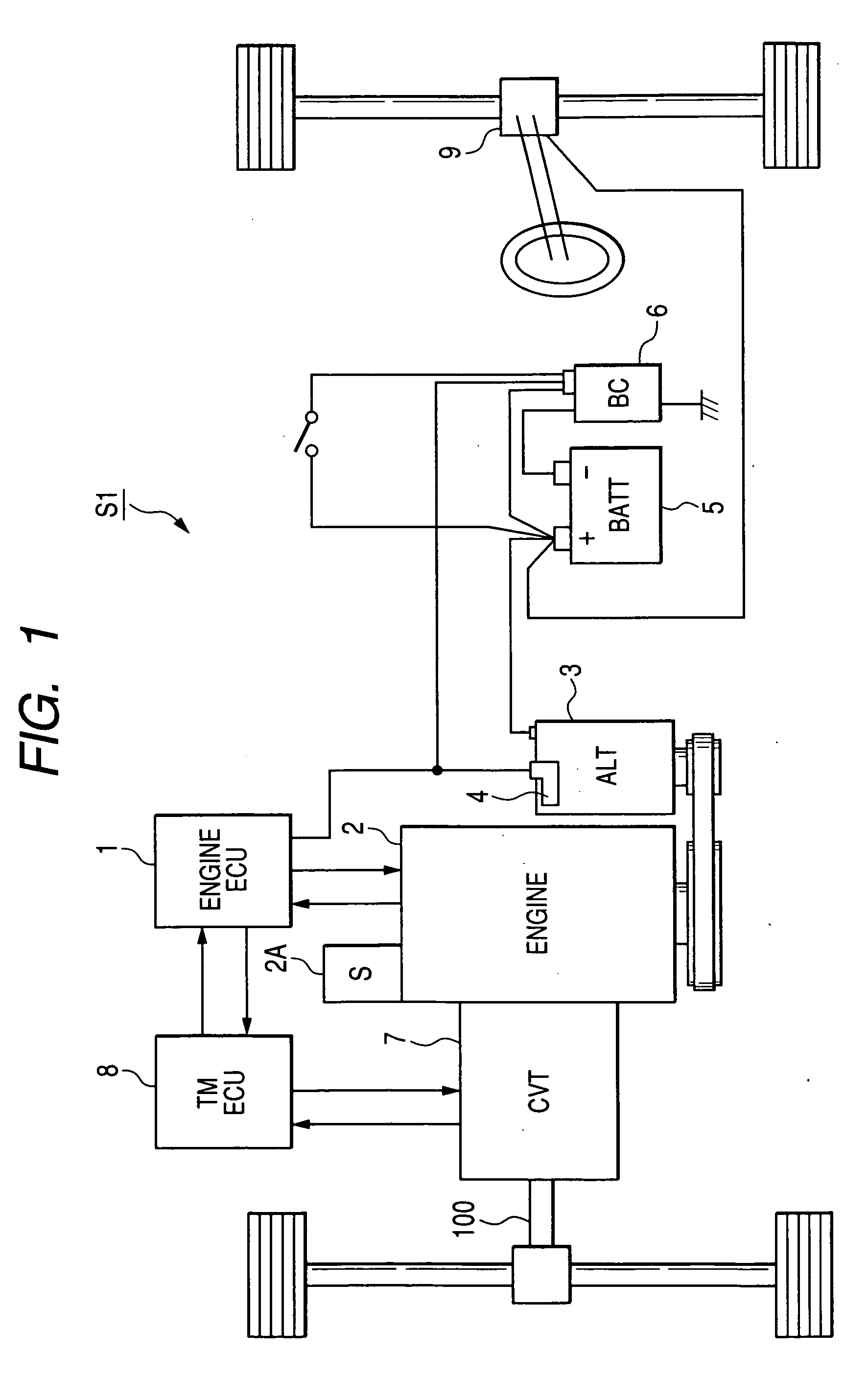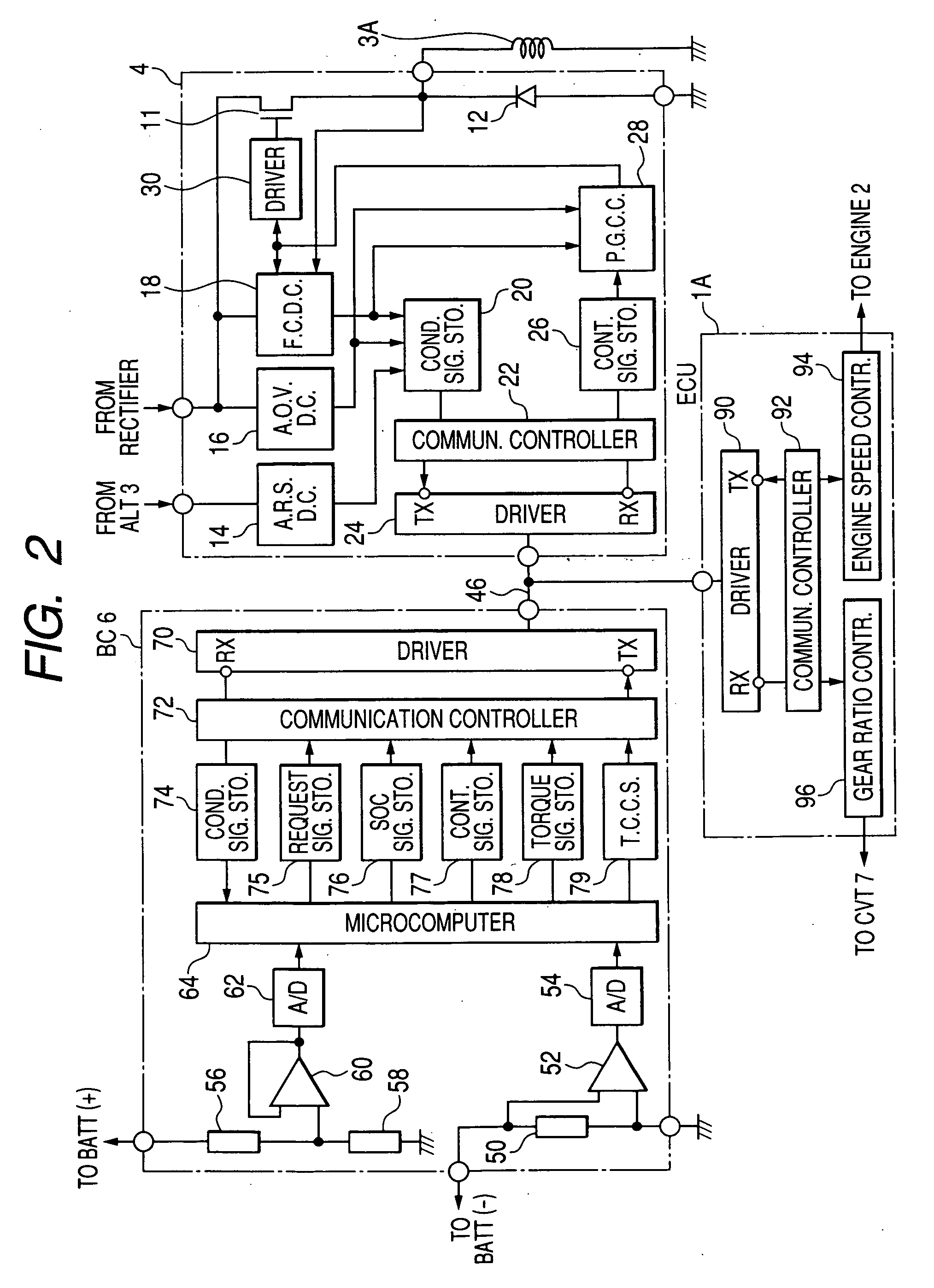Vehicular system capable of suitably controlling engine speed and gear ratio according to battery charge state
a technology of vehicle and battery charge state, applied in the field of vehicle system, can solve the problems of increasing the amount of electric power generated, rapid increase or decrease of the rotational speed of the engine, and the output power of the engine is not suitably decreased, so as to achieve sufficient power supply, increase the rotational speed of the engine, and increase the amount of electric power
- Summary
- Abstract
- Description
- Claims
- Application Information
AI Technical Summary
Benefits of technology
Problems solved by technology
Method used
Image
Examples
Embodiment Construction
[0033]FIG. 1 shows the overall configuration of a vehicular system S1 according to an embodiment of the present invention, which is used in a motor vehicle.
[0034]As shown FIG. 1, the vehicular system S1 includes an engine ECU (Electronic Control Unit) 1, an internal combustion engine 2, an automotive alternator 3 (denoted by ALT in FIG. 1), a battery 5 (denoted by BATT in FIG. 1), a battery charge / discharge control apparatus 6 (denoted by BC in FIG. 1), a Continuously Variable Transmission (CVT) 7, a transmission ECU 8 (denoted by TM ECU in FIG. 1), an electric power steering apparatus 9, and a drive shaft 100.
[0035]The engine ECU 1 controls the operation of the engine 2.
[0036]The alternator 3 is driven by the engine 2 via a belt to generate electric power. The generated electric power is used to charge the battery 5 and power various electric loads on the vehicle. The alternator 3 includes a built-in power generation control apparatus 4, which regulates the output voltage of the al...
PUM
 Login to View More
Login to View More Abstract
Description
Claims
Application Information
 Login to View More
Login to View More - R&D
- Intellectual Property
- Life Sciences
- Materials
- Tech Scout
- Unparalleled Data Quality
- Higher Quality Content
- 60% Fewer Hallucinations
Browse by: Latest US Patents, China's latest patents, Technical Efficacy Thesaurus, Application Domain, Technology Topic, Popular Technical Reports.
© 2025 PatSnap. All rights reserved.Legal|Privacy policy|Modern Slavery Act Transparency Statement|Sitemap|About US| Contact US: help@patsnap.com



